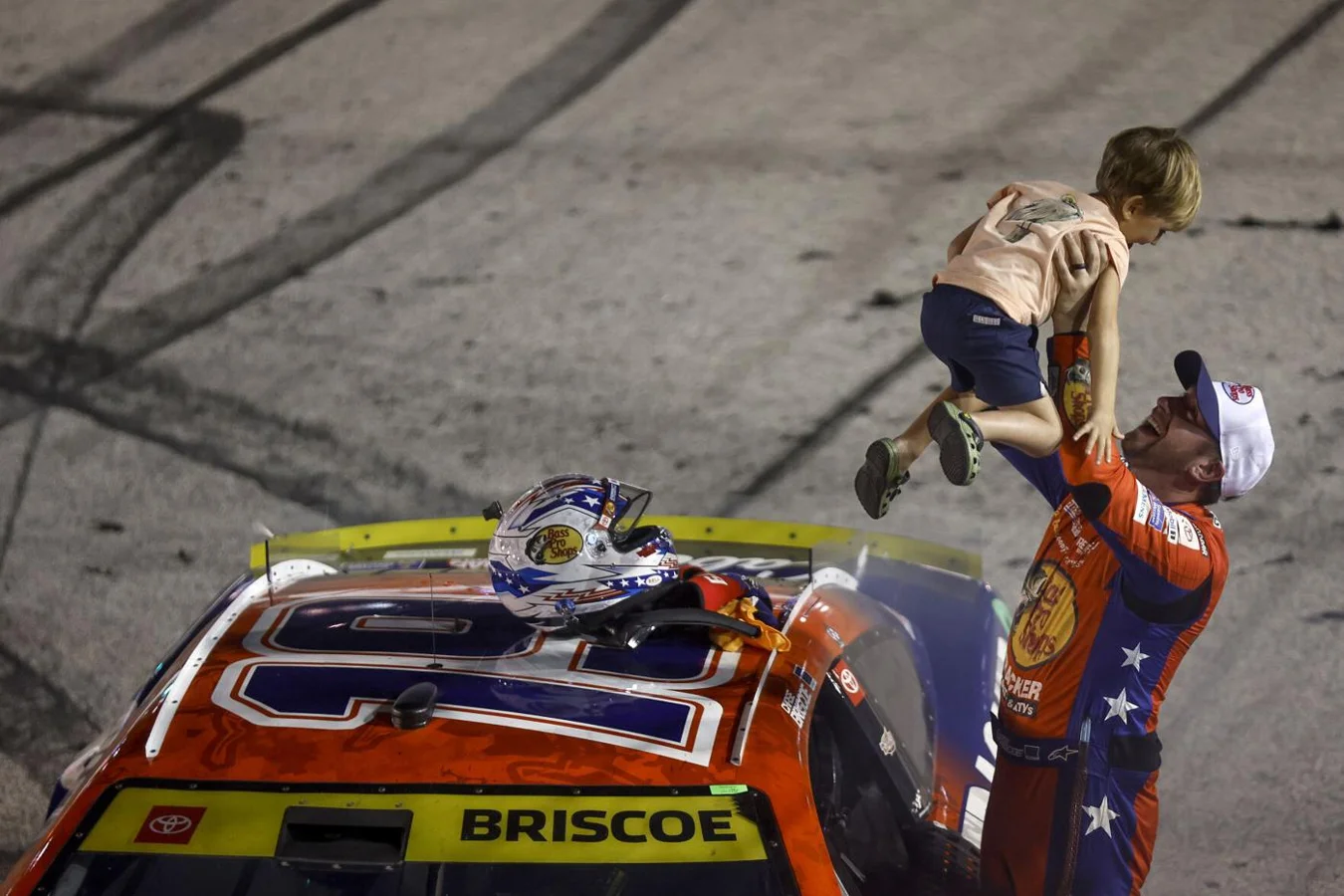In a standout display of skill during Sunday’s Southern 500, Chase Briscoe Southern 500 domination was on full display as he led a staggering 309 laps at Darlington Raceway on August 31, a feat not witnessed in generations. Briscoe’s performance set new landmarks for the event, outpacing marks set since the mid-1980s and reinforcing his presence among NASCAR’s elite.
Briscoe’s 309 laps out front marked the highest total by a single driver in a 500-mile Darlington event since 1986, and it was the most laps led in a Southern 500 since Bobby Allison dominated with 329 laps led in 1971. Such a commanding output hasn’t been seen in decades, as even in the modern era, drivers have struggled to convert dominant runs into victories at this historic track.
The win also launched Briscoe into the company of greats, making him the first NASCAR Cup Series competitor since Greg Biffle—who accomplished the task in 2005 and 2006—to win back-to-back Southern 500s. Further cementing his legacy, Briscoe became the first driver since Cale Yarborough (in 1973-74 with different car owners) to achieve consecutive Southern 500 triumphs with different teams.
Breaking a Pattern of Elusive Victories for Dominant Drivers
Briscoe overcame a long-standing trend that plagued even the best in NASCAR. In nearly four decades, only a single driver who led more than 200 laps—a list that includes legends and modern champions—managed to secure the win at the Southern 500. Kevin Harvick’s 2014 run was the rare exception. Briscoe’s ability to seal the deal after such a commanding show therefore stands as a rarity in the sport’s modern narrative.
With Darlington often described as a grueling challenge featuring shifting track conditions, it has always been more important for drivers to be at their best during the final laps. Despite leading much of the distance, Briscoe had to defend his position vigorously in the race’s late stages against serious threats from Tyler Reddick and Erik Jones. Both drivers were in striking range during the final 20 laps but couldn’t overcome Briscoe’s track position and the dominant pace of the No. 19 car, a situation heightened by the significant advantage conferred by clean air in the Next Gen era.
Race Execution and Team Strategy Propel Briscoe
The accomplishment was as much a product of flawless execution on pit road as it was of Briscoe’s driving. His team delivered rapid and consistent pit stops throughout the night, keeping him in front and mitigating any mid-run falloff in performance. As the event wore on and the long green-flag runs exposed weaknesses in long-run handling, Briscoe’s earlier gains held off late challenges, resulting in a career-defining triumph.
Briscoe’s Southern 500 domination also represents a reversal of fortune in recent NASCAR seasons, where drivers with strong short-run speed often faded late. The pattern on Sunday demonstrated that dominance from start to finish is still possible, even in a field balanced by newer machinery and rapidly evolving setups.
A Season of Major Margins and Upset Narratives
The 2025 Cup Series season has itself become known for dramatic margins of victory and displays of overwhelming dominance. Case in point, seven of the first 27 Cup races this year saw a single driver lead at least two-thirds of the laps. Among those, five converted their performance into victory—the others still finished a close second—reflecting a shift towards lopsided race outcomes.
By comparison, the three prior years (2022-24) with the Next Gen car produced only six such occasions in 108 races, an indication of how the trend has accelerated. Yet, despite more dominant outings in individual events, the year still boasts competitive parity with 14 winners through 25 races, showing that sustained supremacy across a season remains elusive for even the top organizations.
This unpredictable landscape means drivers and teams like Hendrick Motorsports can seem unbeatable some weekends, then off-pace the next—a testament to the ongoing learning curve that the Next Gen platform presents.
How Briscoe Delivered a Milestone Victory
The recipe for Chase Briscoe’s runaway at Darlington was clear: a front-row starting spot, pinpoint restarts, and a car with the fastest short-run pace in the field. His crew’s flawless pit work ensured that early advantages were never squandered. Even when competitors gained ground in the closing laps, the timing of pit stops—and Briscoe’s ability to extract maximum speed in clean air—kept them at bay and preserved his margin.
The sequence echoed emerging themes of the 2025 campaign: track position, speed in initial runs, and near-infallible pit execution have combined to allow select drivers to take command of races from green to checkered flags. As the Cup Series gains further familiarity with the Next Gen car, the question arises whether such dominance will become standard fare or if the field will find new ways to even the competition.
The Broader Impact on NASCAR’s Competitive Landscape
Briscoe’s victory at the Southern 500 represents a pivotal moment—not only in his own career but also in the evolving story of NASCAR’s premier series. As teams adapt and strategize within the context of the Next Gen era, outcomes like Briscoe’s raise questions about whether future events will continue trending toward front-loaded dominance or return to the anything-can-happen drama that has long defined the Cup Series.
Fans, teams, and competitors alike will watch closely to see if Briscoe’s triumph signals the beginning of a new normal—or simply stands as an exceptional performance at one of the sport’s most storied venues.
